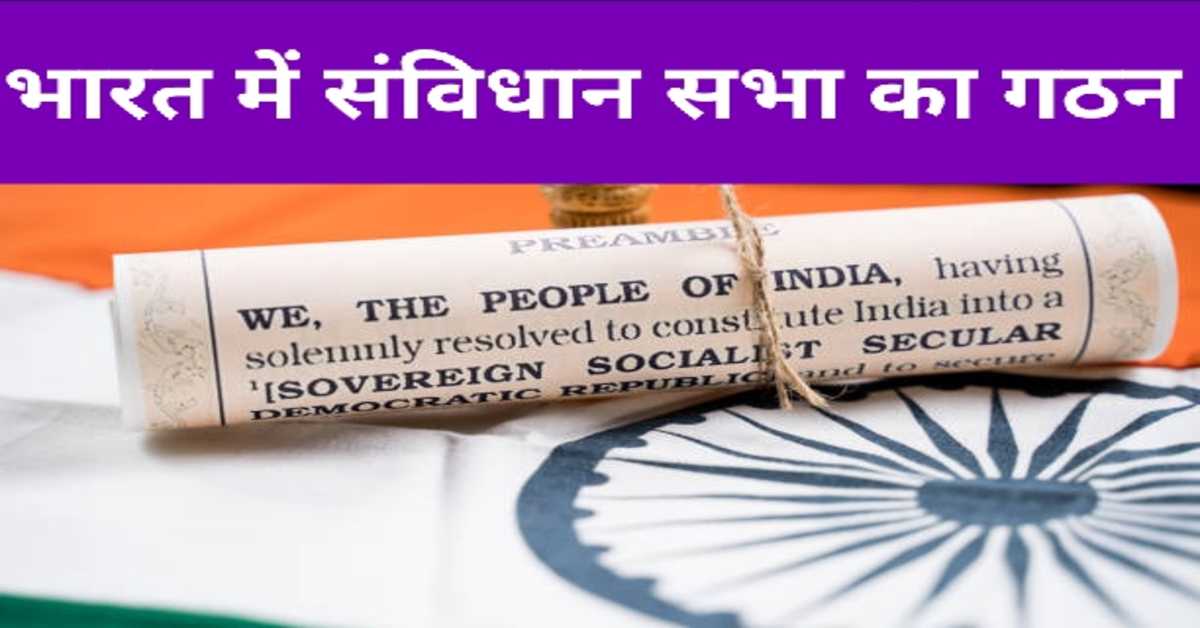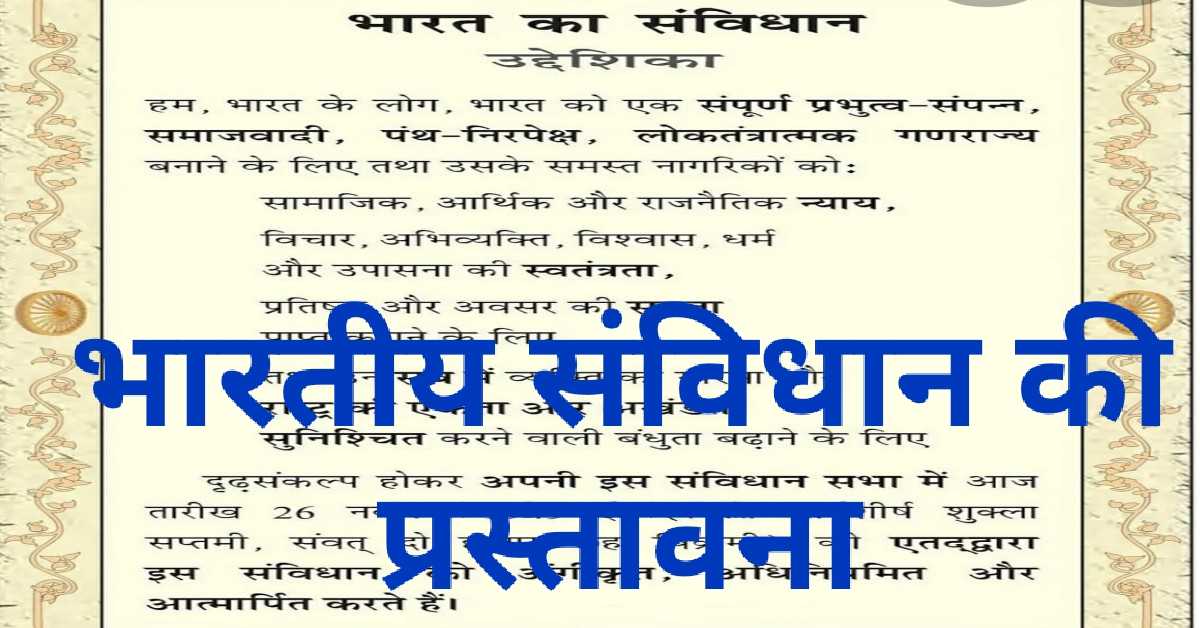.jpg)
अंग्रेज कालीन – भारतीय परिषद् अधिनियम | Indian Council Act - of the British
भारतीय परिषद् अधिनियम (1861)- यह भारतीय संवैधानिक इतिहास की एक महत्वपूर्ण घटना है। इस अधिनियम के अंतर्गत देश में पहली बार सरकार की मंत्रिमंडलीय व्यवस्था प्रारंभ हुई। इस अधिनियम के अंतर्गत कार्यकारी परिषद् के सदस्यों की संख्या चार के स्थान पर पाँच कर दी गई। इनमें से तीन सदस्य प्रशासनिक सेवा के लिए निर्धारित किए गये थे। इन तीन सदस्यों में से प्रत्येक सदस्य को भारत में रहने का 10 वर्ष का अनुभव होना अनिवार्य था। इसके अतिरिक्त शेष दो सदस्यों में किसी एक को 5 वर्ष विधि संबंधी अनुभव प्राप्त होना अनिवार्य था। इस अधिनियम के अंतर्गत वायसराय की विधान परिषद में न्यूनतम 6 तथा अधिकतम 12 अतिरिक्त मनोनीत सदस्य निर्धारित कीये गये। इनमें से कम से कम आधे सदस्यों का गैर सरकारी होना अनिवार्य था। इन सदस्यों की शक्ति केवल विधि निर्माण तक ही सीमित थी। इस अधिनियम के अंतर्गत 1862 में लॉर्ड कैनिंग ने तीन भारतीयों को विधान परिषद में मनोनीत किया था। इस नियुक्ति में बनारस के राजा, पटियाला के महाराजा तथा सर दिनकर राव सम्मिलित थे। इस अधिनियम के अंतर्गत वयसराय को विधान परिषद में भारतीयों को शामिल करने की शक्ति दी गई। यह विधान परिषद् राज्य सचिव के निरीक्षण और नियंत्रण में कार्य किया करती थी। इसके अतिरिक्त वायसराय को विशेषाधिकार दिए गए। वायसराय आपात की स्थिति में अध्यादेश जारी कर सकता था। वह अपनी इच्छा से आवश्यक नियम और आदेश जारी कर सकता था। इसके अंतर्गत लॉर्ड कैनिंग ने देश में पहली बार सरकार की 'संविभागीय प्रणाली' की नींव रखी। इस अधिनियम के अंतर्गत मुंबई तथा मद्रास प्रेसिडेंसियों से कानून बनाने की शक्ति वापस ले ली गई। परिणाम स्वरूप सत्ता के विकेंद्रीकरण की प्रक्रिया प्रारंभ हुई।
Indian Councils Act (1861)- This is an important event in Indian constitutional history. Under this act, for the first time in the country, the cabinetary system was started. Under this Act, the number of members of the Executive Council was increased from four to five. Three of these members were earmarked for administrative service. Each of these three members was required to have 10 years of experience of living in India. Apart from this, it was mandatory for any one of the remaining two members to have legal experience of 5 years. Under this act, a minimum of 6 and a maximum of 12 additional nominated members were fixed in the Viceroy's Legislative Council. It was mandatory for at least half of these members to be non-official. The power of these members was limited to law making only. Under this act in 1862, Lord Canning nominated three Indians to the Legislative Council. This appointment included Raja of Banaras, Maharaja of Patiala and Sir Dinkar Rao. Under this act the Viceroy was given the power to include Indians in the Legislative Council. This Legislative Council functioned under the supervision and control of the Secretary of State. In addition, the Viceroy was given privileges. The Viceroy could issue ordinances in case of emergency. He could issue necessary rules and orders at his will. Under this, Lord Canning laid the foundation of 'departmental system' of government for the first time in the country. Under this act the power to make laws was withdrawn from the Presidencies of Bombay and Madras. As a result, the process of decentralization of power started.
इस 👇 बारे में भी जानें।
1. भारतीय संविधान के स्रोत
2. भारतीय संविधान का निर्माण
3. भारतीय संवैधानिक विकास के चरण
4. अंग्रेजों का चार्टर एक्ट क्या था
5. अंग्रेजों का भारत शासन अधिनियम
भारतीय परिषद् अधिनियम (1892)- यह अधिनियम भारतीय राष्ट्रीय कांग्रेस के 1889 से 1891 ई. तक के अधिवेशनों में स्वीकार किए गए प्रस्तावों से प्रभावित होकर पारित किया गया था। इस अधिनियम का प्रमुख उद्देश्य विधान परिषदों का विस्तार और उन्हें अधिक शक्तिशाली बनाना था। इस अधिनियम के अंतर्गत केंद्रीय और प्रांतीय विधान परिषदों का विस्तार हुआ। विधान परिषद में नए सदस्य भी सम्मिलित किए गए। इनमें से 40% सदस्यों का गैर-सरकारी होना अनिवार्य था। केंद्रीय तथा प्रांतीय विधान परिषदों में गैर-सरकारी सदस्यों की नियुक्ति के अप्रत्यक्ष तथा सीमित चुनावी प्रावधान दिए गए। किंतु, 1892 किस अधिनियम में 'चुनाव' शब्द का प्रयोग नहीं किया गया था। देश के वित्तीय मामलों जैसे- राजस्व, व्यय, बजट आदि के विषय में वायसराय को सपरिषद् विधान परिषदों से प्रश्न पूछने और संबंधित निर्णय लेने का अधिकार प्रदान किया गया। देश के इन वित्तीय मामलों में नियम बनाने पर सपरिषद राज्य सचिव की अनुमति लेना आवश्यक था।
Indian Councils Act (1892)- This act was accepted in the sessions of Indian National Congress from 1889 to 1891 AD Impressed by the resolutions, it was passed. The main objective of this act was to expand the Legislative Councils and make them more powerful. The Central and Provincial Legislative Councils expanded under this act. New members were also included in the Legislative Council. Of these, it was mandatory for 40% of the members to be non-official. Indirect and limited electoral provisions were made for the appointment of private members in the Central and Provincial Legislative Councils. But, in which Act of 1892 the word 'Election' was not used. The Viceroy was given the right to ask questions to the Council of Legislative Councils and take related decisions regarding the financial matters of the country like- revenue, expenditure, budget etc. For making rules in these financial matters of the country, it was necessary to take permission of the Secretary of the Council of State.
भारतीय परिषद् अधिनियम (1909)- तत्कालीन समय में भारत के वायसराय लॉर्ड मिंटो और इंग्लैंड में भारत के राज्य सचिव जॉन मॉर्ले थे। इन्हीं दोनों के नाम पर इस अधिनियम को 'मॉर्ले-मिंटो सुधार' के नाम से भी जाना जाता है। लॉर्ड मिंटो को 'सांप्रदायिक निर्वाचन का जनक' कहा जाता है। इस अधिनियम का प्रमुख उद्देश्य परिषदों तथा उनके कार्यक्षेत्रों का विस्तार करना था। इसलिए विधान परिषदों को अधिक प्रतिनिधिक तथा प्रभावी बनाने हेतु उपाय किए गए। इस अधिनियम के अंतर्गत केंद्रीय विधान परिषद में सरकारी सदस्यों के बहुमत की व्यवस्था की गई। इसके अतिरिक्त प्रांतीय विधान परिषदों में गैर-सरकारी सदस्यों के बहुमत की व्यवस्था की गई। वायसराय की कार्यकारिणी परिषद् में नियुक्त पहले भारतीय 'सत्येंद्र प्रसाद सिंन्हा' थे। विधान परिषद् में इन्हें विधि सदस्य के रूप में शामिल किया गया था। विधान परिषद् के सदस्यों को देश के वित्तीय मामलों एवं बजट आदि को अंतिम रूप से स्वीकार करने से पूर्व इस विषय पर वाद-विवाद करने और प्रस्ताव पारित करने का अधिकार प्रदान किया गया। इसके अतिरिक्त ये सदस्य सार्वजनिक हित से संबंधित विषयों की विवेचना कर सकते थे। इन्हें प्रस्ताव पारित करने का अधिकार दिया गया। इस अधिनियम के अंतर्गत जाति, वर्ग, धर्म आदि के आधार पर पृथक् निर्वाचन प्रणाली का प्रयोग किया गया। इसके अंतर्गत प्रेसिडेंसी कॉर्पोरेशन, चेंबर ऑफ कॉमर्स और जमींदारों को पृथक् प्रतिनिधित्व प्रदान किया गया। इस अधिनियम के अंतर्गत देश में पहली बार केंद्रीय विधान परिषद् के लिए मुस्लिम वर्ग हेतु भी पृथक् निर्वाचन की व्यवस्था की गई थी।
Indian Councils Act (1909)-The then Viceroy of India Lord Minto and Secretary of State for India in England was John Morley. This act is also known as 'Morley-Minto Reform' after both of them. Lord Minto is known as 'Father of Communal Election'. The main objective of this act was to expand the councils and their functions. Therefore, measures were taken to make the Legislative Councils more representative and effective. Under this act, provision was made for the majority of government members in the Central Legislative Council. Apart from this, provision was made for majority of non-official members in the provincial legislative councils. 'Satyendra Prasad Sinha' was the first Indian appointed to the Viceroy's Executive Council. He was included in the Legislative Council as a law member. The members of the Legislative Council were given the right to debate and pass resolutions on this subject before the final acceptance of the country's financial matters and budget etc. In addition, these members could discuss matters of public interest. They were given the right to pass the resolution. Under this act, separate electoral system was used on the basis of caste, class, religion etc. Under this, separate representation was provided to the Presidency Corporation, the Chamber of Commerce and the Zamindars. Under this act, for the first time in the country, for the Central Legislative Council, a separate election was also arranged for the Muslim class.
इन 👇एतिहासिक महत्वपूर्ण प्रकरणों को भी पढ़ें।
1. सिकंदर का भारत पर आक्रमण- इसके कारण एवं प्रभाव
2. जैन धर्म के 24 तीर्थंकर एवं महावीर स्वामी की पारिवारिक जानकारी
3. बौद्ध धर्म एवं बुद्ध का जीवन परिचय
4. मगध साम्राज्य का इतिहास | The Magadh Empire time period
आशा है, यह लेख परीक्षा की दृष्टि से महत्वपूर्ण एवं उपयोगी होगा।
धन्यवाद।
RF Temre
infosrf.com
संबंधित जानकारी नीचे देखें।
(Watch related information below) 👇🏻

आशा है, उपरोक्त जानकारी उपयोगी एवं महत्वपूर्ण होगी।
(I hope the above information will be useful and important. )
Thank you.
R. F. Tembhre
(Teacher)
infosrf.com





Comments